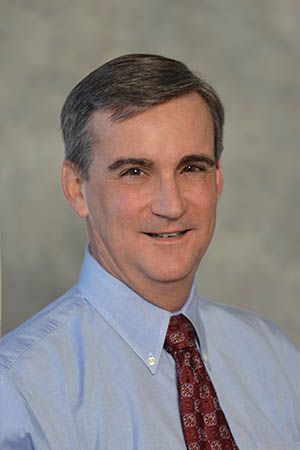- Bone Health
- Immunology
- Hematology
- Respiratory
- Dermatology
- Diabetes
- Gastroenterology
- Neurology
- Oncology
- Ophthalmology
- Rare Disease
- Rheumatology
COA Panel Says Confidence Rests on Real-World Data
Next-stage biosimlar acceptance will stand on the strength and availability of real-world data as more of these biologics are launched, a Community Oncology Alliance (COA) conference panel said.
Providers and health care institutions are going to need a lot more real-world data on how patients respond to various biosimilars and switches between biosimilars and reference products, according to a varied panel of private practice, academic hospital, and group purchasing organization experts in a discussion at the Community Oncology Alliance virtual Community Oncology Conference 2021.
“If we can solve the issue of real-world evidence and data and supply that, I think that will support the use of biosimilars moving forward,” said Sandeep Parsad, PharmD, MBA, BCOP, assistant director of pharmacy at University of Chicago Medicine (UCM).
Providers are going to need convincing, particularly as the choices among biosimilars become more numerous, the panel said. In the oncology space, biosimilars as therapeutic drugs are fairly new, although in supportive care these have been used much longer. And it is often stated that oncologists, especially, become more circumspect in the disease setting about the choice of agents, preferring to go with a well-established originator brand that both they and the patient may have come to trust. To encourage more switching to biosimilars, more evidence is going to be the tool for that, said E. Randolph “Randy” Broun, MD, a blood and marrow transplant specialist with Oncology Hematology Care (OHC), of Cincinnati, Ohio.
“I think data are really lacking in this area. Physicians are going to want data to understand that these truly are biosimilars that are interchangeable and they’re not shortchanging their patients by doing this, even under pressure from payers,” he said.
There’s an important distinction to be made, he said. At his practice, at least, biosimilars are a concept that physicians are very familiar with and they now use these agents in many settings and are comfortable with them. But their confidence in biosimilars can be strained when multiple versions of a single reference product start to appear and they are tasked with making the right choices for their patients.
“Once we have 8 different Herceptins (trastuzumab), are they all the same? Is it reasonable to simply pull a different one off the shelf for a patient who got something different 3 months ago? That will be a barrier, I believe. And you’re only going to solve that with a lot of data that are very convincing that these things are perfectly interchangeable,” Broun said.
Cardinal Health has recognized the value in using biosimilars, as their discounts, particularly when many are available on the market, can be significant, and became proactive with its participating physician practices to cultivate an understanding of these agents that would translate into greater use, according to Sonia T. Oskouei, PharmD, BCMAS, DPLA, vice president of Biosimilars for Cardinal Health.
Parsad said the same goes for her institution. “We took a very purposeful approach to meeting with physicians and nursing staff to talk about the regulatory requirements for approval and demonstrate how biosimilars are similar to reference products, how they have a high standard for safety and quality,” she said.
When it approves a biosimilar, the FDA certifies that it is as safe and effective as the original biologic, and that it has been rigorously evaluated, but the FDA doesn’t give it automatic interchangeable status, meaning pharmacists would be free to substitute the biosimilar with a reference product without informing the physician. Additional requirements are needed for that. It has been hard to explain to physicians that that shouldn’t stop them from prescribing biosimilars, Parsad said. “We felt that was a bit of a bump for us. This is what I’ve heard as well with other colleagues around the country, that physicians do prefer that they are informed when there is a decision whether we should switch or not from the reference product to the biosimilar. But I feel like it went fairly smoothly once there was this very open dialogue.”
It was more of a challenge to develop policies about switching from reference products to biosimilars and in what instances this should occur, she said. A lot of issues arose, such as whether patients should be asked for fresh consent before they are prescribed a biosimilar after having been on a reference product, and if a patient’s condition is stable on a reference product, is it really wise to “rock the boat” and prescribe a biosimilar? And further, following a new diagnosis of metastatic disease, should patients be started on a biosimilar instead of the reference product?
“We had to really work through this saying this is something that we believe as an organization. We believe in the literature, we believe in the data, and we would like to move forward. So, we’ve gotten past that hump,” Parsad said.
All that said, UCM still wants to see more real-world evidence that shows biosimilars can stand the test of time outside of clinical trials performed in limited numbers of patients for the purposes of FDA approval, she said.
Oskouei agreed. “The conversation has definitely evolved with a desire for more real world evidence and studies around biosimilar to biosimilar switching. With 5 trastuzumab biosimilars on the market now for example, and more in the pipeline, this dynamic is becoming something that providers must navigate.”
At OHC, providers are now using biosimilars in practically 100% of situations when it comes to trastuzumab, rituximab, and supportive care products, such as growth factors for the control of neutropenia in patients treated with chemotherapy products, Broun said. But the practice has found it more manageable to administer a single brand of biosimilar overall except in instances where payers demand something different. “Actually, the ones that give us the most trouble as far as the payers are concerned are the growth factors. Every insurance company seems to have their favorite [pegfilgrastim], and so we stock 3 or 4 of those and we have to sort of interchange them.”
It would be nice if payers were more lenient about the choice of biosimilars, panelists said. For example, Parsad noted that the administrative work that goes into payer authorizations could be used on something more beneficial, such as patient education and support. “We’re dealing with it as best we can, but it’s unfortunate,” she said.
These issues resemble growing pains for a relatively new option in medicine that is already proving its value, said Kathy Oubre, MS, CEO of Pontchartrain Cancer Center in Louisiana, who served as panel moderator. “The US market is still in its infancy. We just need to let it mature. Biosimilars have been, at least for our organization, a great way to help provide some cost savings to the system and to the patient.”
Newsletter
Where clinical, regulatory, and economic perspectives converge—sign up for Center for Biosimilars® emails to get expert insights on emerging treatment paradigms, biosimilar policy, and real-world outcomes that shape patient care.




